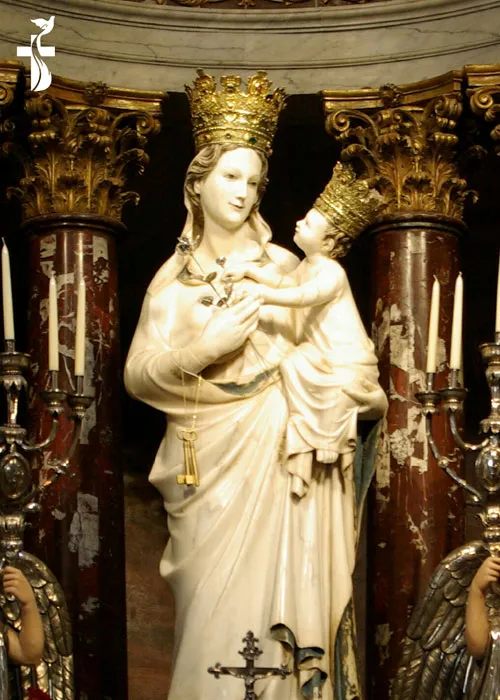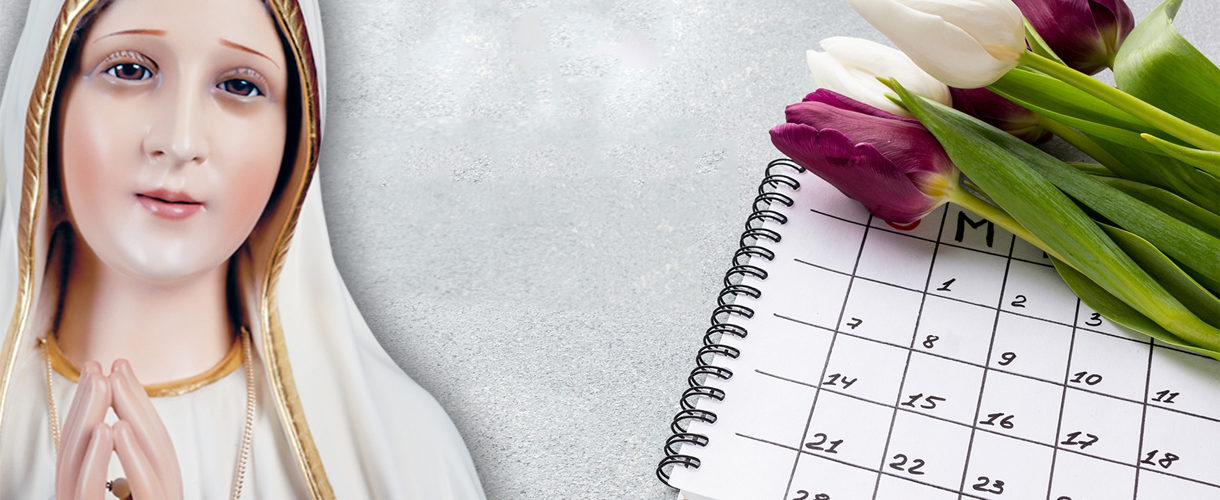
Our Lady Of Trapani
Country : Sicily
Year : 1113
This Madonna is venerated in a chapel of the sanctuary or shrine of Our Lady of the Annunciation (Santuario dell’ Annunziata) in Trapani, Sicily, some 45 miles west of Palermo.
There are several stories about the origin of this title. According to one, the origin of the image dates back to 733. Supposedly, it was the work of a sculpture on the island of Cyprus. He placed it in a church of Fagamusta, where it remained a center of devotion to the Virgin for 400 years.
Then in 1113, during the reign of Baldwin, King of the Crusader Kingdom in Jerusalem, there was established in Jerusalem, the Order of Templars. Around 1130, a group of crusaders, knights and nobles on Cyprus, decided they would join the Order of Templars and forthwith took ship to Jerusalem, and with them they took the image of the Virgin and Child.
The image seems to have remained in Jerusalem for almost 150 years. Then, after the failure of the 7th Crusade, one of the Knights Templar (said to have been Guerrogio of Pisaset), sailed for Italy taking the image with him – possibly to save it from profanation by the Turks. During the course of the voyage, the ship ran into a terrific storm and soon it appeared that the ship and all on board were doomed. But the knight did not despair – he prayed fervently to the Blessed Mother and solemnly promised her, if they weathered the storm, he would enshrine her image on the first land they would touch.
The storm died down and eventually the ship landed at Trapani, Sicily. The story of the miraculous image quickly spread among the people of Trapani and they decided to erect a church in Mary’s honor. Work soon began and the church was completed around 1332. It was rebuilt in 1760.
At one end of the church behind the main altar, there is a fine chapel and in it stands the venerated image of the Madonna of Trapani, a statue of marble, depicting the Virgin with the Infant on her left arm. A new statue was sculptured, and modern authorities think the present statue is a work of the 13th century art schools, possibly of the Fisan School. However, Our Blessed Mother needs neither time, artists, or sculptors to make her image famous.



